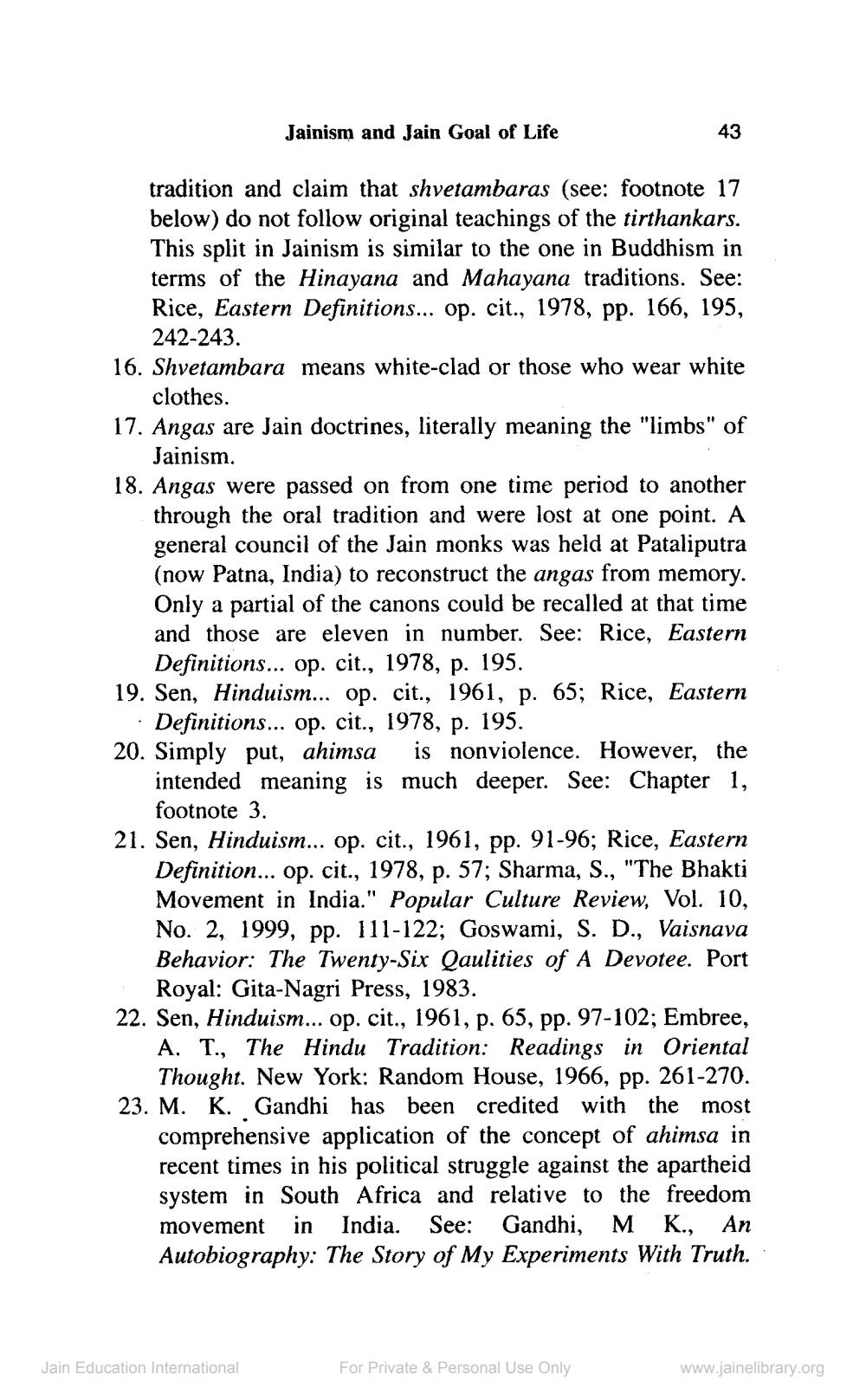________________
Jainism and Jain Goal of Life
43
tradition and claim that shvetambaras (see: footnote 17 below) do not follow original teachings of the tirthankars. This split in Jainism is similar to the one in Buddhism in terms of the Hinayana and Mahayana traditions. See: Rice, Eastern Definitions... op. cit., 1978, pp. 166, 195,
242-243. 16. Shvetambara means white-clad or those who wear white
clothes. 17. Angas are Jain doctrines, literally meaning the "limbs" of
Jainism. 18. Angas were passed on from one time period to another
through the oral tradition and were lost at one point. A general council of the Jain monks was held at Pataliputra (now Patna, India) to reconstruct the angas from memory. Only a partial of the canons could be recalled at that time and those are eleven in number. See: Rice, Eastern
Definitions... op. cit., 1978, p. 195. 19. Sen, Hinduism... op. cit., 1961, p. 65; Rice, Eastern
· Definitions... op. cit., 1978, p. 195. 20. Simply put, ahimsa is nonviolence. However, the
intended meaning is much deeper. See: Chapter 1,
footnote 3. 21. Sen, Hinduism... op. cit., 1961, pp. 91-96; Rice, Eastern
Definition... op. cit., 1978, p. 57; Sharma, S., "The Bhakti Movement in India." Popular Culture Review, Vol. 10, No. 2, 1999, pp. 111-122; Goswami, S. D., Vaisnava Behavior: The Twenty-Six Qaulities of A Devotee. Port
Royal: Gita-Nagri Press, 1983. 22. Sen, Hinduism... op. cit., 1961, p. 65, pp. 97-102; Embree,
A. T., The Hindu Tradition: Readings in Oriental
Thought. New York: Random House, 1966, pp. 261-270. 23. M. K. Gandhi has been credited with the most
comprehensive application of the concept of ahimsa in recent times in his political struggle against the apartheid system in South Africa and relative to the freedom movement in India. See: Gandhi, M K., An Autobiography: The Story of My Experiments With Truth.
Jain Education International
For Private & Personal Use Only
www.jainelibrary.org




